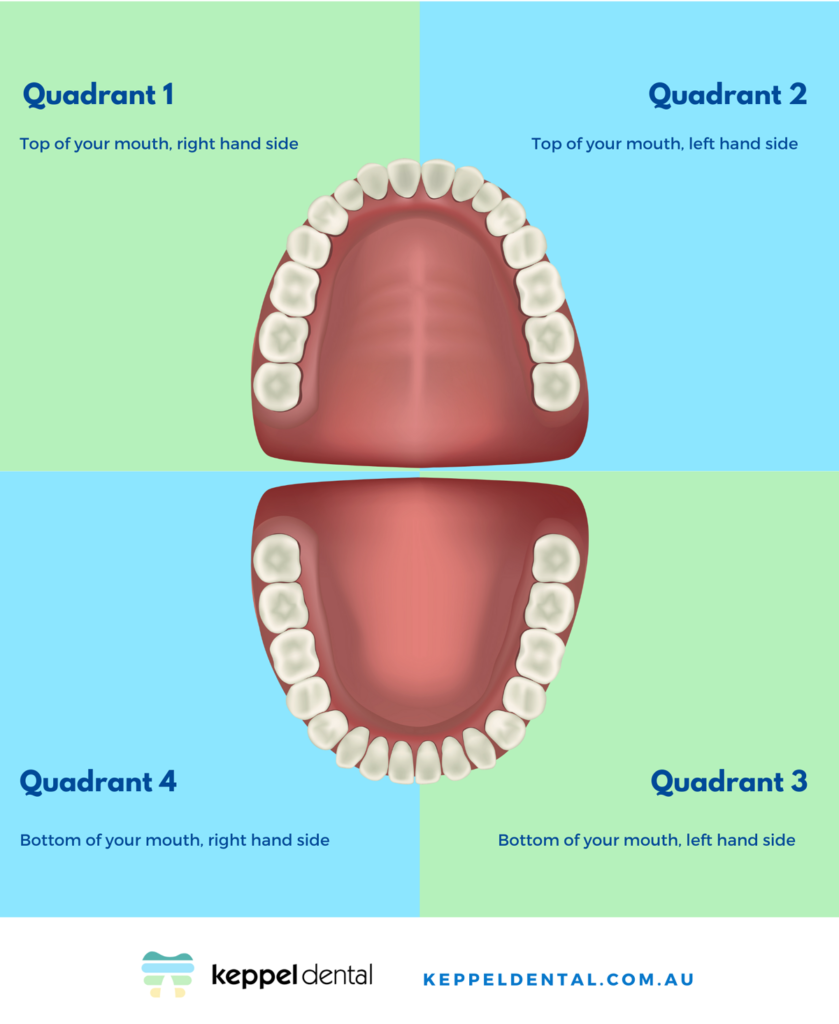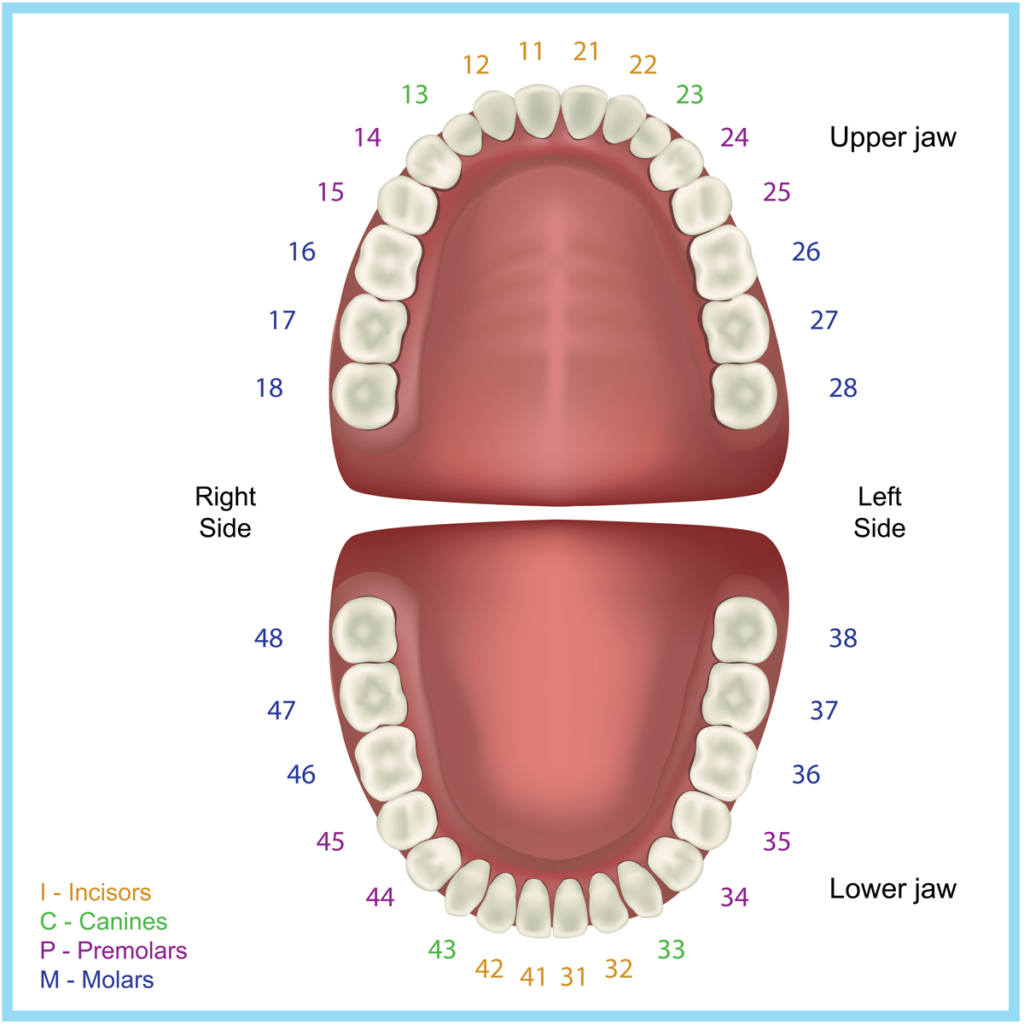Why is it that as soon as the dental chair lowers and your head goes back your dentist goes from making perfect sense to talking gibberish?
To the untrained ear, they sound like a mathematician whose sums don’t add up. It’s weird, unnerving and you want to know what’s being said about your teeth. Are the numbers good or bad?

In this article you’ll learn why dentists number teeth, what each number means and how it helps with dental notation, so at your next appointment you may even be able to de-code some of their dental lingo.
The numbering system we use in Australia
There are a couple of different dental numbering systems used throughout the world. In the UK they use the Palmer notation system, while in America they have the Universal numbering system. Here in Australia, we use the Federation Dentaire International (FDI) notation method. It’s a two-digit numbering system and helps dentists record the condition of your teeth and gums.
The mouth is divided into quadrants
When dentists look into your mouth, we see four sections. These are called quadrants and we work around each quadrant in an anti-clockwise direction to you as you’re sat in the chair, but clockwise direction as we’re looking at you. So, what we see is this:
All teeth in quadrant 1 start with a 1. All teeth in quadrant 3, start with a 3, and so on. The quadrant number is the first digit in the numbering system.

Each tooth is given its own number
For adults, there are eight teeth within each quadrant. Each is numbered from 1-8 and this number describes the type of tooth.
To give you an example, the front teeth (your incisors) on the top and bottom of your mouth are all given the number 1. The incisors next to that are number 2. Here are the numbers for each of the different types of teeth.
| Name of tooth | Number |
|---|---|
| Incisors | 1 and 2 |
| Canines | 3 |
| Premolars | 4 and 5 |
| Molars | 6, 7 and 8 |
These numbers stay the same for each type of tooth. So, for example, whether it’s a molar on the top of your mouth or a molar on the bottom it will always be a 6, 7 or 8. As a note, molar 8 is a wisdom tooth.
Putting it all together
What you hear as we’re going through and numbering your teeth is us identifying which quadrant we’re working in and which specific tooth we’re looking at. For example, when you hear us say “two-one” (not 21) it means we’re in quadrant 2 and looking at your front incisor. “Four-seven” means we’re in quadrant 4 and looking at a molar. (The second molar in the quadrant, to be exact.)
Using the FDI system allows the dental assistant to quickly understand where the dentist is looking without second-guessing or peering into your mouth at the same time to see where we are.
Here’s the whole lot mapped out.

What to listen out for
Now you know how dentists number teeth, what are we harping on about as we call them out to the dental assistant?
The first few numbers you hear are the numbers of teeth you’re missing. We’ll say “One-eight, two-eight, three-five, not present,” and the assistant marks these off on the record. After identifying which are missing, we call out any teeth that have crowns or fillings, and any implants. So, you might hear us say, “Two-four, existing DO composite restoration.” ‘DO’ stands for distal-occlusal and refers to the surface of your molar teeth.
You’re likely to hear a few easy to recognise words and phrases as we go through and make notes on chips, damage, holes and potential cavities. “Build-up,” is a favourite one. This refers to a build-up of plaque around a tooth.
Give your dental language skills a spin
If you’re coming to see us soon, let us know you’ve given this a read. We’ll happily help you practice your new dental lingo skills and see how far you can understand what we’ve found out about your teeth at your latest check up.